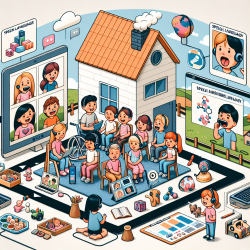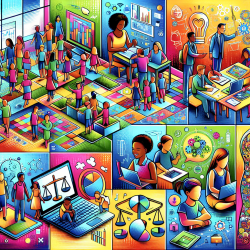Early Intervention (EI) services for children from birth through two years of age are essential for promoting development and improving the quality of life for infants and toddlers with disabilities or developmental delays. However, personnel shortages, especially in rural areas, often limit access to these critical services. According to the research article "Telerehabilitation: An Adjunct Service Delivery Model For Early Intervention Services" by Jana Cason, telerehabilitation presents a promising solution to this challenge.
Telerehabilitation leverages telecommunications technology to provide therapeutic services remotely. This model has demonstrated feasibility and effectiveness in delivering EI services, as evidenced by several studies:
- Cason (2009): Demonstrated that telerehabilitation can improve access and reduce costs for rural families receiving early intervention occupational therapy.
- Heimerl & Rasch (2009): Conducted 224 telerehabilitation encounters and concluded that telehealth services provide a viable alternative when in-person services are not feasible.
- Kelso et al. (2009): Found high satisfaction among families and interventionists using interactive telecommunications technology, suggesting telerehabilitation is both feasible and beneficial.
- Vismara et al. (2009): Demonstrated that telehealth technology is as effective as face-to-face instruction for training early intervention providers.
Given the evidence supporting telerehabilitation, practitioners can enhance their skills and improve service delivery by incorporating this model into their practice. Here are some key takeaways for practitioners:
1. Enhancing Access to Services
Telerehabilitation can bridge the gap caused by personnel shortages, especially in rural areas. By using telecommunications technology, practitioners can provide timely and effective services to children who might otherwise go without.
2. Promoting Family-Centered Services
Telerehabilitation aligns with the consultative service delivery model, focusing on empowering caregivers. Through remote consultations, practitioners can coach caregivers to embed therapeutic techniques within daily routines, promoting skill development in natural environments.
3. Building Capacity Among Local Providers
Remote consultations with specialists can enhance the skills of local providers, enabling them to deliver higher-quality services. This collaborative approach ensures that children receive comprehensive care tailored to their unique needs.
4. Leveraging Technology
Several technology options are available for telerehabilitation, including Voice over Internet Protocol (VoIP), mobile videoconferencing, and consumer HDTV videoconferencing. Practitioners should consider local infrastructure, technology access, and costs when selecting the best solution for their needs.
5. Implementing Training and Competency Standards
To ensure effective telerehabilitation services, it is crucial to develop training materials and competency standards for providers. This will ensure that practitioners have the necessary technical and therapeutic skills to deliver high-quality services remotely.
By incorporating telerehabilitation into their practice, practitioners can enhance the delivery of early intervention services, improve access for underserved populations, and promote family-centered care. For more detailed information and to read the original research paper, please follow this link: Telerehabilitation: An Adjunct Service Delivery Model For Early Intervention Services.










